
Alaska is one of the few places in the world where all three species of North American bears live.
©BGSmith/Shutterstock.com
American black bears are a medium-sized forest-dwelling bear with blackish fur that can be found in North America, including all of Canada. Some black bears have even been found as far south as central Mexico. These bears also live in Eastern Asia, where they are commonly known as Asiatic black bears. So, are these big, beautiful creatures dangerous? They can be, if provoked or invaded upon. Keep reading to learn more about how dangerous the black bear is and what to do if you happen upon one.
Are Black Bears Dangerous?
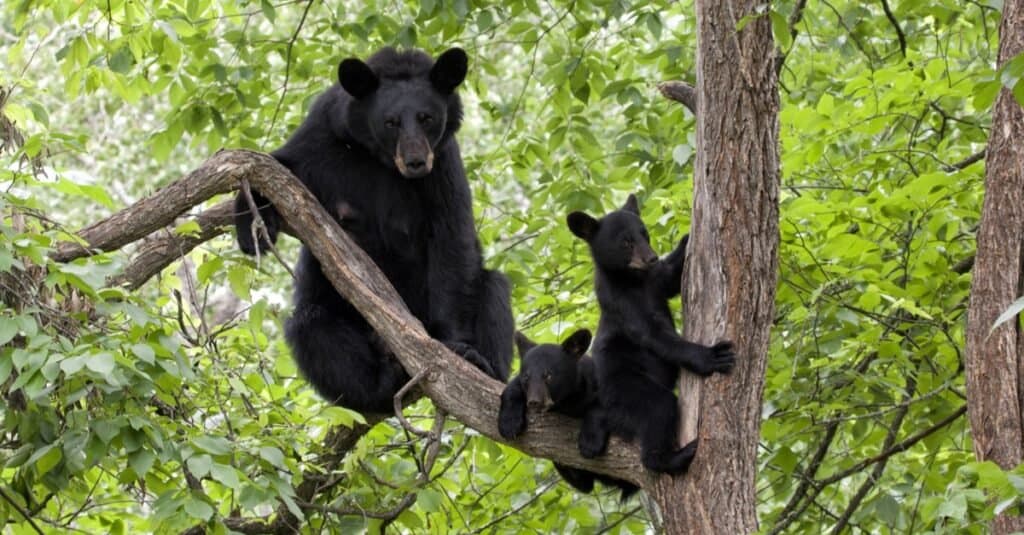
Black bears are not naturally aggressive, but they can be quite dangerous if provoked or invaded upon.
©Debbie Steinhausser/Shutterstock.com
Yes, black bears are dangerous even if they don’t mean to be. Bears spend most of their time looking for food or eating whatever food they find. If you happen upon their territory, they may feel threatened and try to attack.
There is a higher risk of being attacked by a bear if you reside in or near an area where bears frequently forage. As a part of their natural preparations, bears should be avoided by hikers, hunters, and anybody else who comes into bear territory. Also, be sure to keep pets away from these areas too.
Fatal Black Bear Attacks
There is generally an average of one fatal black bear attack every year in North America. Most attacks take place in more rural areas such as Canadian woods, Alaska, or national parks. Below is a number of fatal black bear attacks by year in North America since 2010:
- 2021: 2 Fatal Attacks (Alberta, Colorado)
- 2020: 3 Fatal Atacks (North Carolina, Saskatchewan, Ontario)
- 2019: 1 Fatal Attack (Ontario)
- 2018: 0 Fatal Attacks
- 2017: 2 Fatal Attacks (Alaska)
- 2016: 0 Fatal Attacks
- 2015: 2 Fatal Attacks (Montana, British Columbia)
- 2014: 2 Fatal Attacks (Alberta, New Jersey)
- 2013: 1 Fatal Attack (Alaska)
- 2012: 0 Fatal Attacks
- 2011: 2 Fatal Attacks (Arizona, British Columbia)
- 2010: 1 Fatal Attack (Ohio)
How Big Are Black Bears?
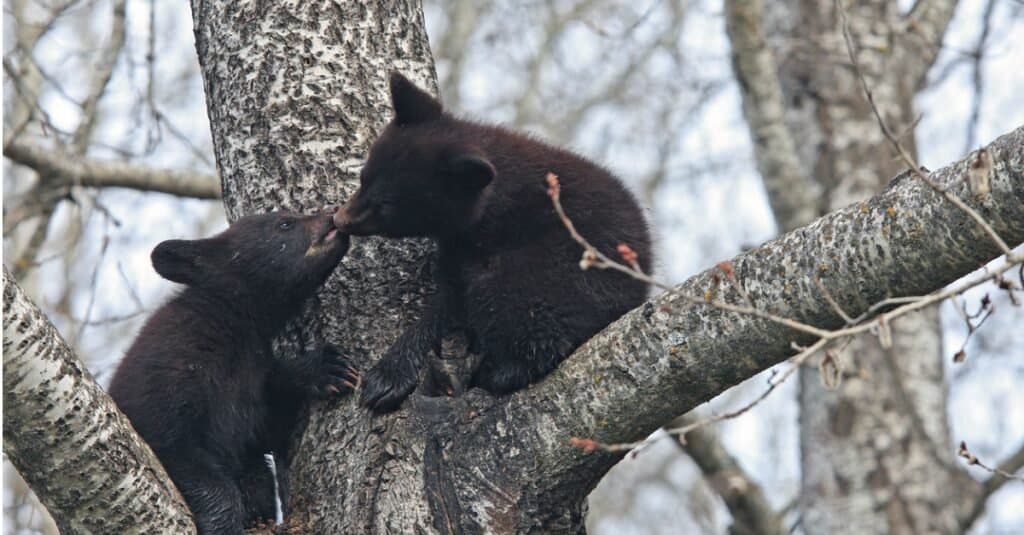
The average weight for an adult female black bear is 175 lbs.
©iStock.com/Michel VIARD
About 175 pounds is the average weight of an adult female black bear; 400 pounds is the average weight of an adult male bear (also called a “boar”). Black bears stand between 5 and 7 feet tall when erect and 3 to 4 feet tall while standing on all fours.
Are Black Bears Territorial?
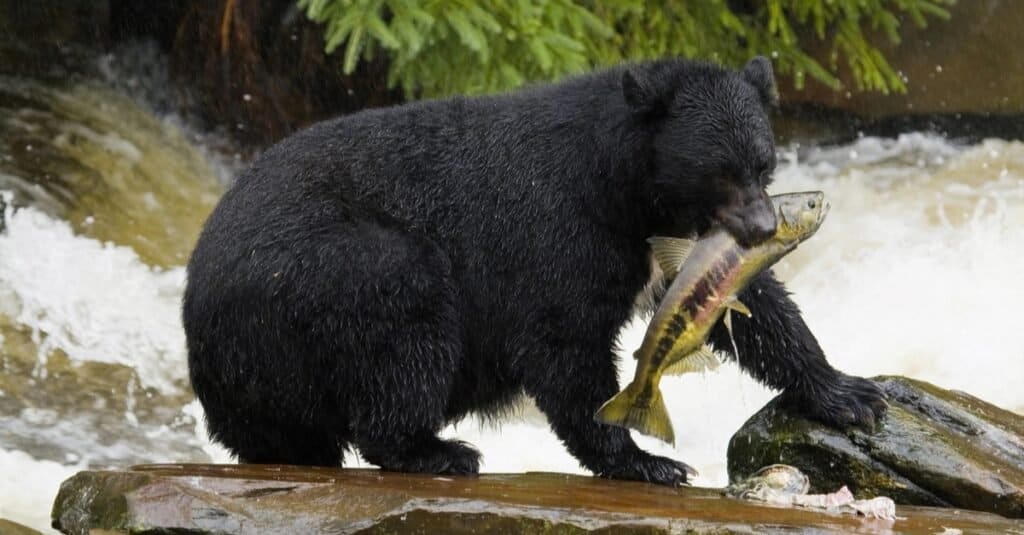
Black bears are not territorial, as they do not typically frequent the same spot.
©emperorcosar/Shutterstock.com
Bears are not territorial, even if they are guarding a food source or a companion while they are present. They don’t patrol or protect a specific area from other bears. Bears have some personal space, although various animals will intrude on each other’s living area at various times.
If black bears know there is food nearby, they are more likely to return to the same spot daily. They do not, on the other hand, return to the same location unless there are compelling reasons to do so. They’ll move over their enormous areas in search of food and mates if you don’t give them a reason to stay in your region.
What Do Black Bears Eat?
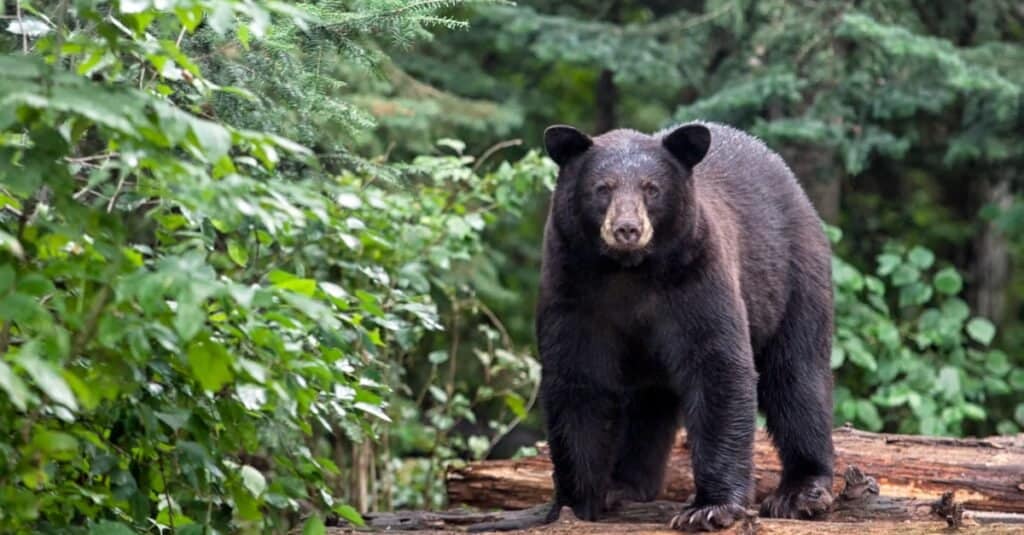
Black bears eat a well-balanced diet of fish, fruit, plants. and insects.
©iStock.com/Lynn_Bystrom
Black bears like to dwell in the trees, although they will reside anywhere there is food. Bears in the U.S. are omnivorous, eating a wide range of foods, including vegetables and meat. They also eat fruit, fish, larvae, insects, grass, and plants.
Would A Black Bear Eat a Human?

Although some bear species attack and even eaten humans, the black bear is not known to do this.
©Derek R. Audette/Shutterstock.com
Bears do not eat humans in general since humans are not their primary source of food. In part due to black bears’ proximity to larger population centers, they average about a fatal attack every year in North America. While they produce more fatalities than polar bears, polar bears are more aggressive but live in more remote areas. The bear that most commonly attacks humans is the brown bear, which is generally larger than black bears and has a smaller range that includes the western United States.
How Strong Is a Black Bear?
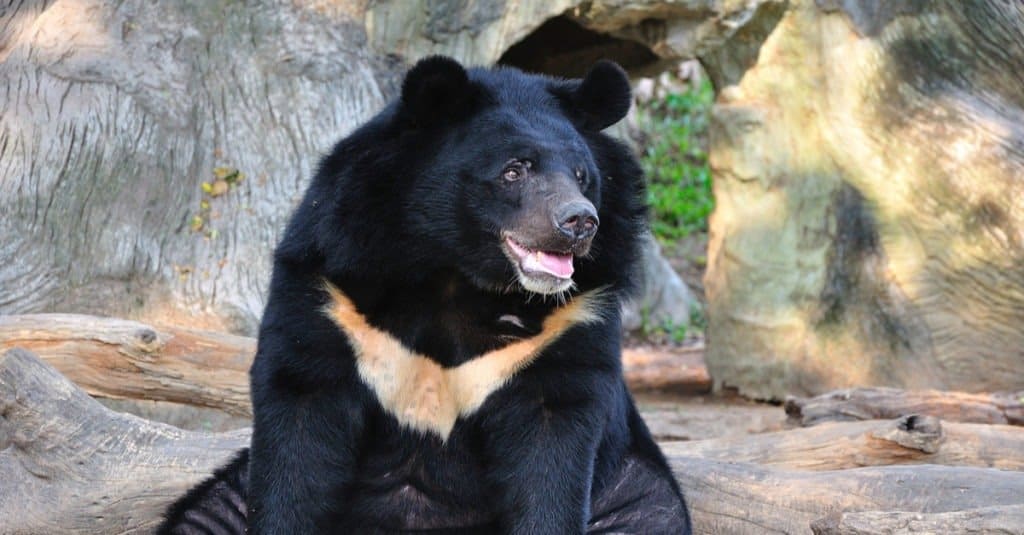
The black bear is a powerful animal with sharp teeth that can easily tear through flesh.
©Tigger11th/Shutterstock.com
Bears are without a doubt among the most powerful animals on the earth, and they have long been both loved and feared. Due to their massive body, acute sense of smell, speed, and biting force, they are among the most powerful animals on the planet.
The biting strength of a black bear is 975 pounds per square inch, it can run up to thirty miles per hour, and its front claws are shorter, measuring less than 2 inches in length. The claws are more curled and pointed than those of a grizzly bear. The teeth of a black bear may effortlessly shred and tear flesh without any problem. An adult black bear tooth is on average about 2.5″ from top to bottom and 0.75″ wide in the middle.
Are Black Bears Very Aggressive?
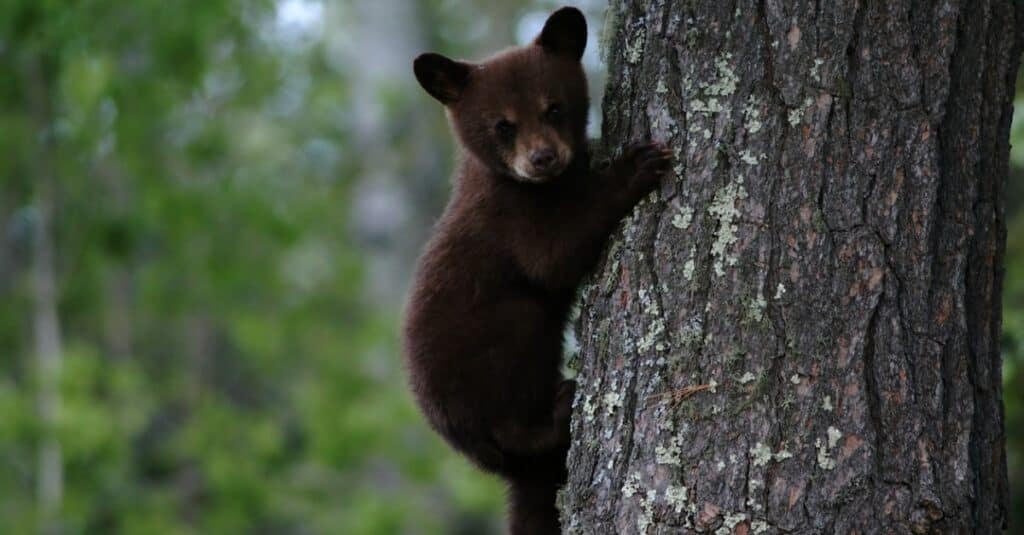
Black bears are timid animals who want to be alone and are not aggressive unless they feel threatened.
©iStock.com/EEI_Tony
Black bears are typically not aggressive and the fear that “all bears want to attack people,” is not a healthy or safe way of thinking. There needs to be a balance. Black bears are kind, timid animals for the most part but thinking they are cuddle and friendly and attempting to approach or agitate their habitat is not safe by any means.
How Do You Deal with a Black Bear Encounter?

If you happen upon a black bear, make yourself look as large as possible and make loud noises.
©USFWS / Hollingsworth, John and Karen, Public domain, via Wikimedia Commons – License
If you happen to encounter a black bear, face the bear straight from a standing position. Never approach or run away from him. By spreading your arms or wearing a coat, you can appear as large as possible. Yell, bash pots and pans, or use other noisemakers to create as much noise as possible. Most likely, this will startle the bear and it will take off.
What Are the Different Ways to Survive a Black Bear Attack?
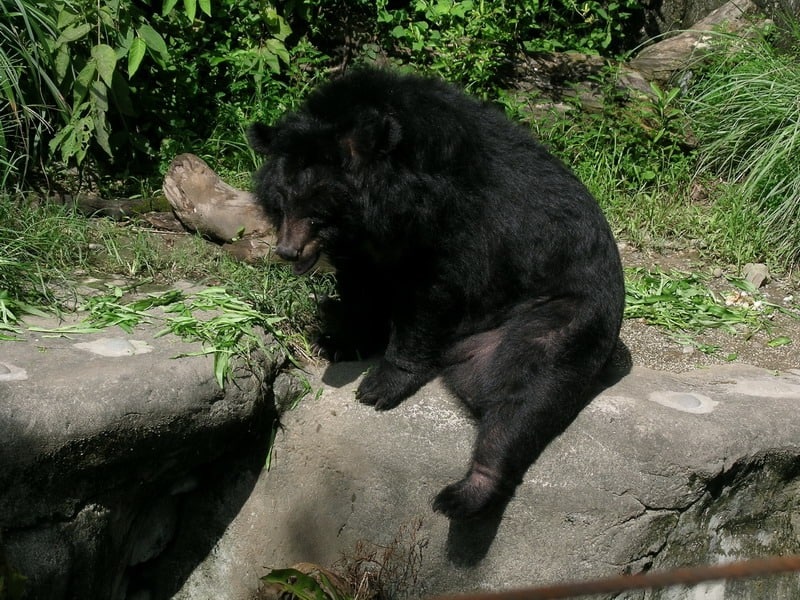
If a bear attacks you, the best thing to do is play dead. Box the bear’s nose and eyes if it tries to bite.
©smartneddy / Creative Commons – License
If you travel to a region where bear encounters are common, you should always carry bear spray. Keep the bear spray in a holster or front pocket because you’ll only have a few seconds to use it. Don’t tease or taunt the bear and don’t try to be stealthy. Additionally, don’t flee or make any abrupt moves.
It is believed that if a bear gets close enough to make contact, the best thing to do is drop to the ground and pretend to be dead. Box the bear’s snout or eyes if it claws at you or tries to bite.
The photo featured at the top of this post is © iStock.com/ElliotHurwitt
FAQs (Frequently Asked Questions)
Are Black Bears And A Grizzly Bears The Same?
Grizzly and black bears are often difficult to distinguish due to their size and color variances. A prominent shoulder hump distinguishes the grizzly bear from the black bear. Grizzlies have a more concave or “dished” facial profile than black bears, as well as smaller ears and larger claws.
Thank you for reading! Have some feedback for us? Contact the AZ Animals editorial team.






